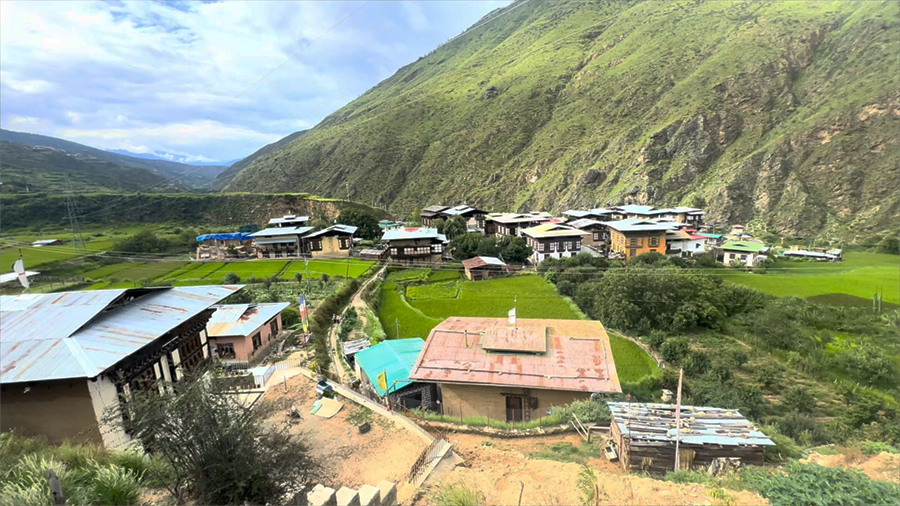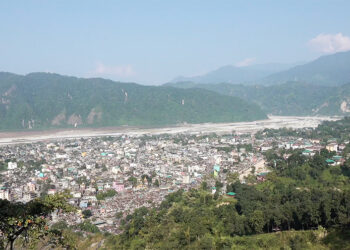
Plans are underway to establish Uesuna village in Paro as a cultural heritage site. The Department of Culture and Dzongkha Development is working to preserve traditional architectural designs and lifestyles while promoting tourism and economic growth. Students from the College of Science and Technology have collaborated with the department to develop proposals and concepts for this initiative. Uesuna village is situated along the Paro-Thimphu highway.
Twenty-five final-year architecture students from the College of Science and Technology (CST) stayed in Uesuna for a week.
The village, which has more than 30 households, provided a setting for the students to discuss with locals the preservation of traditional architectural designs, lifestyles and challenges, as well as promoting tourism and improving livelihoods.
This initiative is a joint effort between the Department of Culture and Dzongkha Development and CST.
In addition to developing plans for Uesuna as a cultural heritage site, the project aims to revise CST’s architecture curriculum to include modules on traditional construction and heritage site conservation.
Deki Choden, a student said “we are able to understand the physical variation of traditional buildings and the buildings that are built today. It does not match in size and style. We used to do the documentation, site study and detailed drawings. We got the experiences on how to promote and preserve culture in real life.”
Pem Choki, an architect from the Department of Culture and Dzongkha Development said “Uesuna is strategically located between the capital and Paro which is developing fast compared to the rest of the districts. However, the aspects of tradition are least considered. Therefore, we brought the students here who will survey and document the features of the village and in the course, they will be able to advocate how we can preserve and promote culture and tradition.”
The students developed five plans to promote economic growth while preserving tradition, focusing on agriculture, tourism, and crafts.
The plans are developing Heritage Grains- to preserve local grains for self-sufficiency, Echoes of Time – meaning transforming the entire village into a living museum, Isu-Zay – to promote regional food, Ueusukor – constructing a hiking trail around the village, and Your Chim – updating the traditional designs with modern amenities.
The villagers of Uesuna welcomed the plans and initiatives presented by the students.
Gyem Lham, a villager said “I had plans to renovate and convert my house into a museum. However, due to financial constraints, I was not able to do that. There are tourists visiting our village but we have not benefitted at all.”
“The students were asking about our agricultural produce in comparison to the past. Now, we focus more on vegetables. In the past, we used to grow wheat, buckwheat and other crops but we do not grow it anymore,” said Sangay Dem, another villager.
“Our village is clustered and unique. Tourists can enjoy a good view from above the village. This is an additional initiative which can enhance our economy and livelihood. It will benefit us immensely,” said Dawa, Mendrel-Uesuna Tshogpa.
If the villagers choose to move forward with the concept to revitalise the village, they should approach the Department of Culture and Dzongkha Development for further support and implementation.
Additionally, the project aims to demonstrate how cultural preservation and sustainable community development can coexist, serving as a model that could be replicated in other rural communities.
Namgay Wangchuk, Paro
Edited by Tshering Zam









